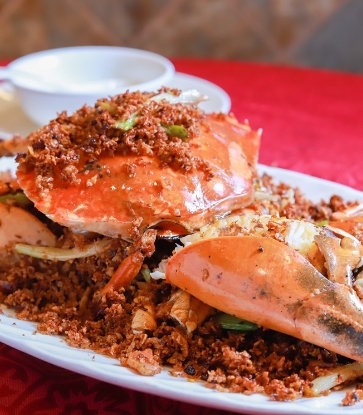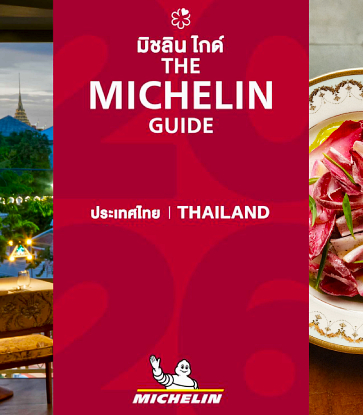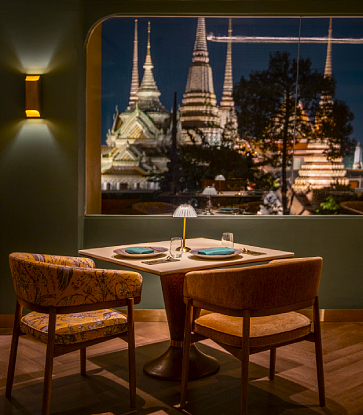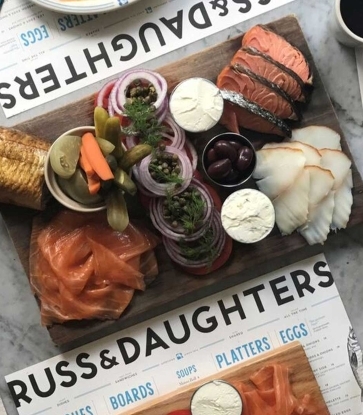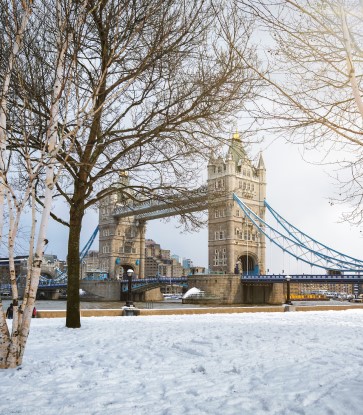With The MICHELIN Guide for Great Britain & Ireland 2025 having just been announced – and Moor Hall, which has just picked up a third Star, leading the charge – there has rarely been a better time for food-lovers to visit. From buzzing big cities to serene countryside, you’ll find restaurants that rival the best in the world. But, beyond its quality, what makes British and Irish food so special? What makes the UK and Ireland stand out and why should they top a hungry local or curious visitor’s list? Here are five reasons why the UK and Ireland’s restaurants are among the best in the world.

1. A Global Outlook
Where cuisine types like French and Japanese have distinct, world-renowned personalities, ‘British food’ in modern times feels more elusive. Ask even a Brit to define it, and they may get stuck after fish & chips and the traditional Sunday dinner of roasted meat and vegetables. But this perceived absence of national cuisine is not a fault, it’s an opportunity. Over the past few decades, both the UK and Ireland have embraced an ‘open-door’ policy where cooking styles from around the world can find a second home, thanks to our local population’s insatiable culinary curiosity.
London in particular is a city for whom the phrase ‘melting pot’ could have been invented, with more authentic international restaurants being added to The Guide every year. In London’s buzzy central Soho neighbourhood alone, going for dinner means choosing between Indian or Italian, French or Filipino, even Taiwanese, Thai or Turkish cuisines. In fact, this year’s awards reflect this outlook. There was a first Star for a Greek restaurant, along with accolades for recent Thai, Korean and Malaysian openings.
And it’s this global openness that has attracted the very best of the world’s chefs to our shores. It’s why Alain Ducasse, Hélène Darroze and Pierre Gagnaire came over from France, and why chefs like Endo Kazutoshi and Ahmet Dede left their home countries of Japan and Turkey to share their sublime cooking with British and Irish diners. In style as well as cuisine, our Stars are also wonderfully varied – ranging from intimate chef’s tables to top-drawer pubs.
2. It’s the Home of the Local Pub
While it’s this diversity that makes the UK and Ireland so exciting, there’s a lot to be proud of in our traditional dishes too. Steak & kidney pie, sausage & mashed potato and the obligatory Sunday roast may seem simple, but when done well there’s little more enjoyable – and there’s nowhere better to enjoy them than in a proper pub. With the warmth of their atmosphere and simplicity of their décor, pubs are a quintessential style of eatery that visitors from all over the world are keen to experience. Harking back to the days of the coaching inn, they are still very much pillars of the community that will often provide shelter (many have rooms upstairs) and nourishment to the weary traveller.
The pinnacle of our dining pubs is Tom Kerridge’s The Hand and Flowers in Buckinghamshire; still the only pub in the world to hold Two MICHELIN Stars, it changed the limits of what’s possible for this kind of cooking. One-Star pub food can also be found at The Cross near Warwick, The Harwood Arms in London, The Bridge Arms in Kent and The Dog and Gun Inn in the Lake District. For those searching for a great value pub meal, there are a range of Bib Gourmand (our Inspectors’ best-value picks) inns: from village locals like The Reindeer in Nottinghamshire to coastal treasures such as The Royal in East Sussex, via city spots like The Broad Chare in Newcastle. And to find out why Irish hospitality is so globally revered, look no further than Spitalfields in Dublin.
3. Home-Grown, Game-Changing Chefs
Alongside the unique institution of the pub, the UK and Ireland also boast a glittering array of home-grown chef talent. After all, Gordon Ramsay – one of the most famous chefs in the world – was born in Scotland and forged his reputation in London, where he has held Three Stars since 2001. Heston Blumenthal, too, has had a global influence with his restless invention at The Fat Duck; and Clare Smyth – the first British woman to win Three Stars – continues to provide one of the finest dining experiences in the world.
It would be impossible to name every path-breaking British and Irish chef, but in today’s landscape a special mention must be given to Simon Rogan, for his 'Our Farm' development and pioneering of farm-to-plate cuisine for over 20 years; to JP McMahon, steadfast champion of Irish produce and Galway in particular; to Tom Kerridge, for elevating pub food to Two-Star level; to Jason Atherton, a skilled chef and restaurateur who has rapidly expanded his empire around the world with Stars in both London and Dubai; and now to Mark Birchall, the latest British chef to earn Three MICHELIN Stars with the refined, produce-led Moor Hall.
4. A New Generation of Talent
It’s not just the present, but the future, of British and Irish gastronomy that is in good hands, with an exciting new vanguard of chefs. Chief among them is Angelo Sato, who has just been awarded Two MICHELIN Stars for his restaurant Humble Chicken in Soho. A relentlessly driven and thrillingly inventive cook, his Japanese-inspired dishes are beautiful to behold.Other pathbreakers with Two Stars include Ahmet Dede, with his fusion of Irish ingredients and Turkish flavours; Jeremy Chan, who explores the boundless possibilities of West African cooking; and Tom Sellers, who puts a fresh spin on traditional British dishes, creating modern classics of his own (his beef dripping candle is a signature dish).

More break-out talents include former Simon Rogan acolyte Tom Barnes, who has now earned a Star at his own restaurant Skof in Manchester; Lorna McNee from Glasgow’s MICHELIN-Starred Cail Bruich, who looks poised to become a household name; Santiago Lastra and his innovative Mexican cooking using only British ingredients at KOL in London; Tomos Parry, dictating London’s culinary tempo with the wildly successful Brat and Mountain; and Yorkshire duo Tommy Banks and Jake Jones, masters of field-to-fork with a Star each at The Black Swan and Forge respectively.
5. Only the Best Produce
Any top chef will tell you that without ingredients of quality, you’re going to struggle to cook something truly special. The UK and Ireland are fortunate to have one of the most abundant and diverse larders in the world. Every corner of these countries is known for its superb produce, from seafood on our coasts to meats reared in our countryside. To get a snapshot of the best ingredients around, look out for Orkney scallops, Carlingford oysters, Perthshire strawberries, Herdwick hogget from the Lake District and brilliant lamb from the Welsh valleys.
If you want an unadulterated taste of quality produce, you can’t go wrong with a visit to St. JOHN. A groundbreaking British restaurant, it takes traditional, no-nonsense dishes like mince on toast and elevates them to MICHELIN-Star standards. If you want to see the growing process in action, head to the countryside and explore the likes of Homestead Kitchen and Daylesford Organic Farm, where the ingredients are grown in touching distance of the dining room.
Ultimately, that is why the UK and Ireland’s restaurants are so extraordinary. It’s because of restaurants like Moor Hall, Story and Ikoyi, because of chefs like Heston Blumenthal, Clare Smyth and Ahmet Dede – and because few people can say no to a proper pub lunch.
Hero Image: The Black Swan, Oldstead. © Andrew Hayes Watkins






